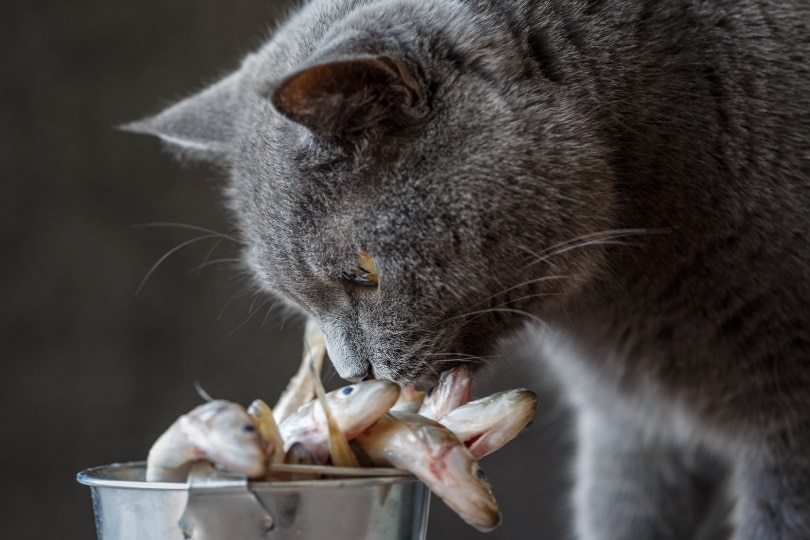Why Is Your Cat Leaving Blood Drops on the Floor: 7 Vet-Reviewed Reasons

Updated on
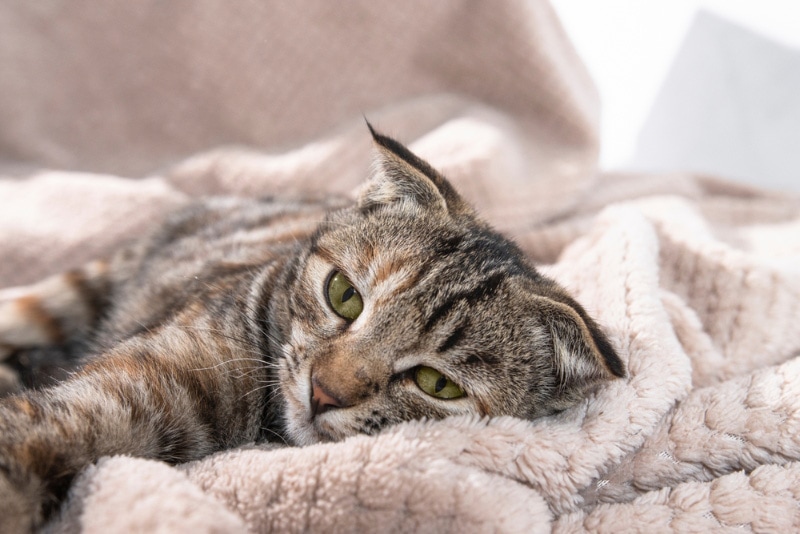
It can be quite alarming to see your cat leave blood drops on the floor. This is obviously not a good sign, and you might need to act fast to keep your animal healthy. Today, we’ll explore some of the many reasons why your cat might be bleeding and what you can do to help the situation. Let’s dive straight into it.
The 7 Reasons Your Cat Is Leaving Blood Drops on the Floor
There are several reasons why your cat might be leaving blood drops on the floor as it walks. Some of the most plausible scenarios include the following:
1. A Cut
Before jumping to conclusions and worrying yourself silly, take a look over your cat. The bleeding could be from a cut or wound. Cats are naturally curious and get into all sorts of trouble. It’s possible that your cat has cut itself or been in a cat fight. Try to see where the blood is coming from and take your cat to the vet if you find a wound in need of treatment.
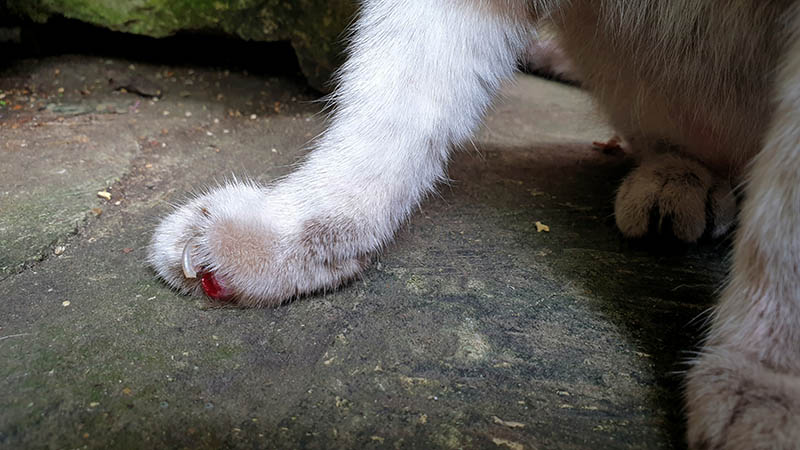
2. In-grown Toenail
On occasion a cat claw can become over long and grow into the cat’s paw pad. This will cause inflammation and eventually some blood from the toe wound. This is a more common problem in older cats as they do not shed their nails as efficiently as younger cats. Check your cat’s nail length regularly in case they need a trim.
3. Anal Gland Problems
In some cases, bleeding could be due to a problem in the cat’s anal gland. These glands produce a strong-smelling fluid that helps cats mark their territory. They are found just inside the anus. If there’s an infection or blockage, it can cause bleeding and pain. In such cases, your cat will need to see a vet as soon as possible.
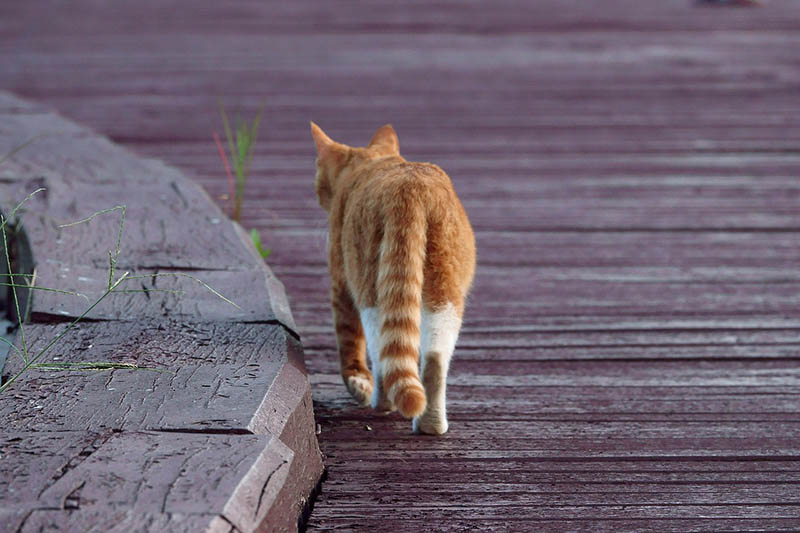
4. A Mouth Injury
Your cat’s bleeding could also be caused by a mouth injury or dental problem. Cats can get tongue or lip injuries from cat fights or exploring sharp objects. Dental disease is very common in cats and if they have damaged the gum there may be a few drops of blood. Take your cat to the vet for a check over if you find the blood drips are coming from their mouth.
5. Urinary Tract Disease
If you spot blood in your cat’s urine or little spots of blood around the house, it could be a sign of urinary tract disease. Cats with cystitis may drip blood tinged urine or leave little spots of blood where they have been trying to pass urine. If you see your cat trying to urinate frequently and see blood in the urine contact your veterinary clinic for advice.
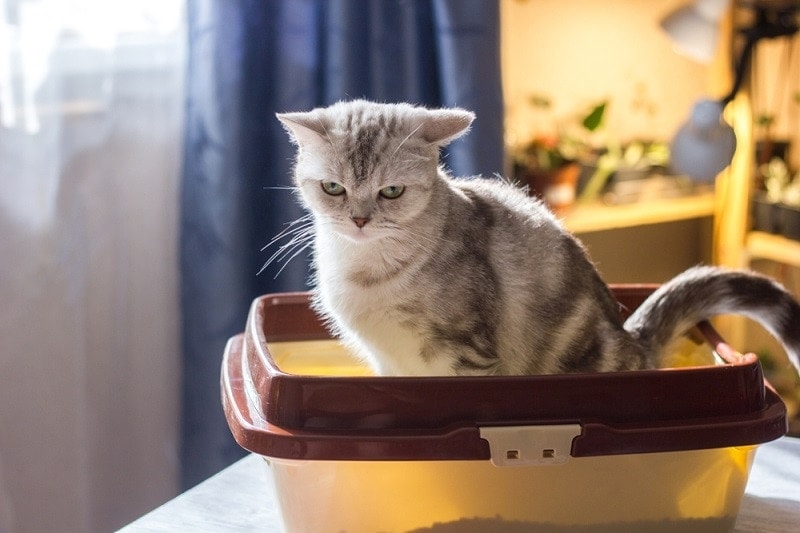
6. Reproductive Tract Causes
The estrus cycle occurs in sexually mature female cats, it is unusual for cats to bleed when they are in heat. However, it is possible. This bleeding shouldn’t last more than a few days. If you have an entire female cat that is bleeding from the vulva they should be checked by a veterinarian to rule out womb infections.
7. Colitis
In some instances a cat with inflammation of the colon may leave a few drops around the house after they have tried to pass feces. If you notice that the blood drops are coming from the cat’s anus and they are straining to pass feces you should take them for a check up.
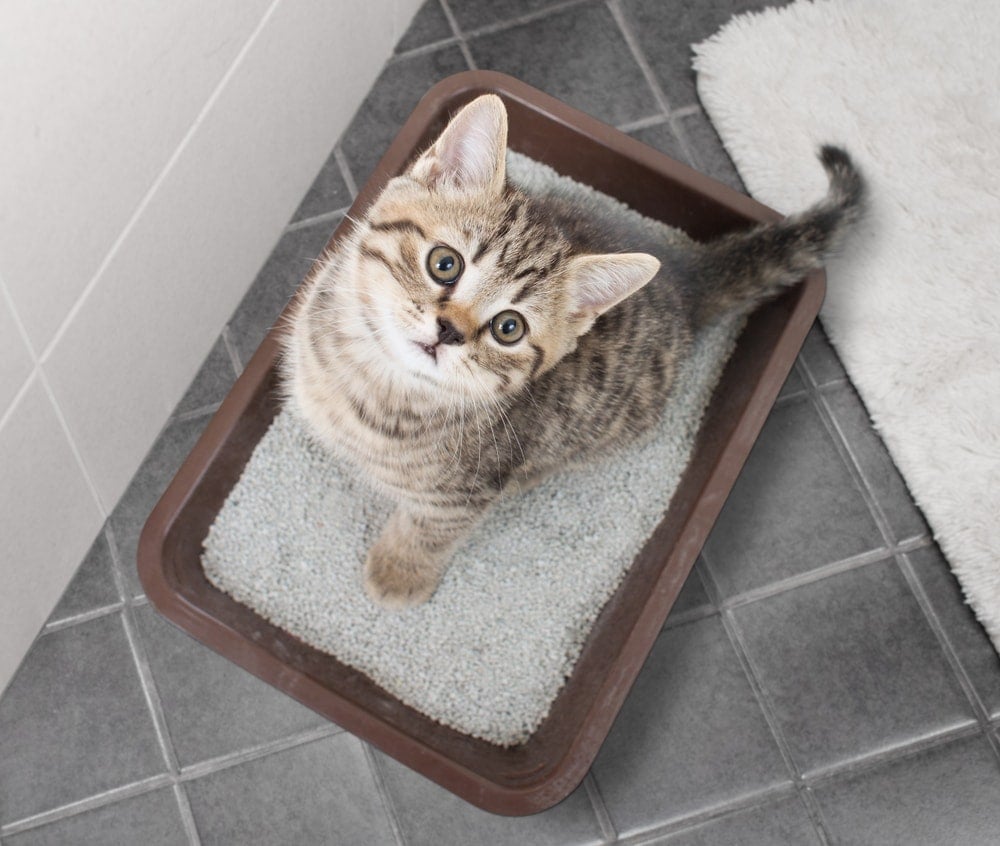
What Should You Do?
The first thing you should do when you notice your cat bleeding is to keep calm. Panicking makes things worse and prevents you from reacting to the situation rationally.
Once you’re calm enough, you need to consider the following:
Location of the bleeding
Knowing where the bleeding is coming from is essential for figuring out the cause. Inspect your cat carefully and pinpoint all the bleeding locations.
Severity of bleeding
Is it just a few drops here and there? Or is the bleeding heavier? This can help you determine whether you need to get to the vet as an emergency.
Duration of bleeding
How long has your cat been bleeding for? The longer it persists, the more likely it is that something serious is going on.

Additional symptoms
Look for other symptoms that might indicate the bleeding is caused by a serious condition. These include vomiting, lethargy, and sudden weight loss.
Once you have all this information, you can decide whether you can address the bleeding at home or if the cat requires professional help. For more serious bleeding, you should take your cat to the vet immediately. However, a minor cut could settle by itself.
Bleeding in cats is usually caused by something minor, like a minor cut or ingrown toenail. However, there are some more serious conditions that can also cause bleeding, such as urinary tract disease. If you notice your cat bleeding, make sure to investigate the source and determine a course of action.
If you’re not sure what to do or have any questions about bleeding in cats, don’t hesitate to reach out to your veterinarian for advice. They’ll be able to provide more detailed advice tailored specifically for your cat and its individual needs. By understanding the causes of finding blood spots on the floor in cats and taking the necessary steps to address them, you can ensure your cat stays healthy and happy.
Final Thoughts
Bleeding in cats isn’t always a sign of something serious, but it’s important to be aware of the potential causes and act when necessary. While bleeding should stop on its own in most cases, there are some conditions that require medical attention.
The information above should help you understand why your cat may be bleeding and how to address it appropriately. Remember, if the bleeding doesn’t stop, contact your vet right away.
Featured Image Credit: Julia Cherk, Shutterstock




